Envisioned as a think tank of the government in the financial and social sector, the National Institute of Bank Management (NIBM), Pune, began with the mandate to conduct policy research. Today, besides its hallmark in training programmes for top- and middlelevel bank management, it has expanded into specialised programmes and e-courses, evolved with the changing needs of the financial and banking sector. Corporate Citizen caught up with Dr K. L. Dhingra, Director, NIBM, on the evolving role of NIBM as well as the challenging assignments he dealt with, before he joined NIBM
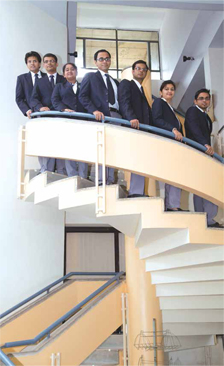
Dr K. L. Dhingra has been the Director of National Institute of Bank Management (NIBM), Pune since May 1, 2017.
He has over 35 years of rich and diverse experience in the banking, finance and management, overseeing credit, project appraisal, merchant banking, financial services, credit rating, industrial finance, resource mobilisation, World Bank-IBRD/IDA funding, risk management, housing and infrastructure finance. He has also considerable expertise in the area of infrastructure development and revival / rehabilitation of sick / financially-stressed PSEs.
Before joining NIBM, he was the Chairman and Managing Director of ITI Ltd., Bengaluru, the first Public Sector Enterprise in India, for over five years. Prior to this, he was the Chairman and Managing Director of Housing and Urban Development Corporation Ltd (HUDCO), New Delhi, the first Financial Institution for Infrastructure and Housing Finance, for over two and a half years. After relinquishing the charge of CMD/ITI, he was the Chief Executive Officer of National Culture Fund, Ministry of Culture, Government of India for about two years. He has been the Vice Chairman of SCOPE (Standing Conference of Public Enterprises) – an apex organisation for the public sector in India for six years. He has a Ph.D. on ‘Corporate Governance in Central Public Sector Enterprises in India: A case study of selected CPSEs’.
NIBM was set up in 1969 by the Reserve Bank of India (RBI) at a time when 14 banks were nationalised, as a result of recommendation of the Working Group on “Training and development of Higher Banking Personnel” constituted by the Governor, Reserve Bank of India. The Working Group recommended the establishment of the National Institute of Bank Management to serve as the apex institution to coordinate all training and research activity in the banking industry.
NIBM is an autonomous institution for research, training, education and consultancy in bank management. Its mandate is to play a proactive role of “think tank” for the banking industry. NIBM is a part of a grand vision of giving new directions to the banking industry in India and making the industry more cost-effective for national development. Fulfilling the mandate of playing a proactive role of “think tank” of the banking system, Institute has endeavoured to develop and implement programmes that would assist the banks and financial institutions (FIs) to develop capabilities to meet national priorities for the banking sector. The Institute also serves banks and financial institutions in many developing countries It is a unique institution in India shining as a bright example of academiaindustry interface and therefore, its campus is a hub of high learning where constant interactions between bankers, faculty, students; conclaves, debates take place. NIBM is governed by a Board, its highest policy making body. The Governor Reserve Bank of India is the Chairman of the NIBM Governing Board.
 Yusuf Khan
Yusuf KhanPlaying the role of main research and academic arm of the banking industry for continuously upgrading the knowledge and skills, the institution is well equipped to train executives by providing interdisciplinary modules of theory and practical learning. Besides, it is actively providing consultancy to banks in different functional areas. NIBM faculty is dedicated to knowledge creation by research projects and publication of books, monographs, research papers and case studies, etc. Research and consultancy by NIBM has resulted in active policy formulation.
NIBM takes pride that most of the senior officers of the public sector banks including CMDs/MDs have either been trained or have been associated with NIBM. Many of these executives have attended multiple courses at NIBM. And the best of all is that they take pride in being associated with NIBM and fondly remember the time spent here. In fact, the executive who visited us recently, now heading UCO Bank, fondly remembered the time he spent here when he participated in a one-year programme called Bank Management Programme (BMP).
During the FY 2016-17, NIBM conducted 222 training programmes which were attended by 5,954 participants including large number of participants from SAARC and African countries.
NIBM caters to public and private sector banks, financial institutions, cooperative banks, NBFCs and financial sector players like NPCI, CIBIL, etc. If you look at the financial sector of the country, there are 21 public sector banks, many financial institutions like EXIM Bank and ECGC. There are public sector financial institutions also like NABARD, IIFCL, NHB, SIDBI, Rural Electrification Corporation Ltd., Power Finance Corporation, and HUDCO and so on. NIBM is well equipped to serve the rapidly changing banking and financial sector, in addition to all public sector banks as well as new players like new small finance banks as well as the payment banks.
Last year, out of the total 5,954 participants, there were around 873 participants from smaller economies like Bangladesh, Sri Lanka, Nepal, Bhutan, Maldives, Afghanistan and some of the African countries also. It has remarkably expanded.

Training activities of the institute are well planned, keeping in mind the immediate specialised knowledge and skill development requirements of banks in various functional areas, as well as the long-term advanced knowledge and soft skill development requirements to groom new leaders. To accomplish the same, the institute offers innovative and highly specialised Executive Development Programmes (EDPs) in functional areas such as finance, marketing, international banking, treasury, forex, planning, strategic management, human resource management, leadership development, rural finance and information technology.
These efforts are very relevant in the context of retirement of bankers in large numbers and also mass recruitment of young bright and careeroriented officers in the industry. Responding to the skill upgradation needs of different banks, programmes in Marketing, Export Credit Management, Accounting Standards, Inspection, Agriculture, Finance, Agri-Business Investment, Branch Marketing, Leadership and Organisation Development for different banks are also offered.
We recently conducted the first course on “Insolvency Bankruptcy Code 2016 – timely resolution of NPAs” for imparting training on the newly created institutions for the recovery of corporate loans such as National Company Law Tribunal (NCLT), National Company Law Appellate Tribunal (NCLAT) and Insolvency and Bankruptcy Board of India (IBBI), which is the Regulator for this sector.
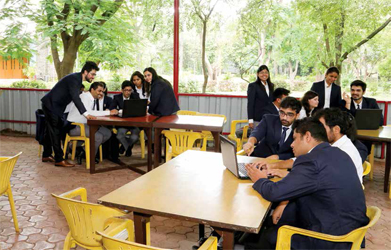
NIBM also offers customised training programmes for SAARC countries viz., Sri Lanka, Bangladesh and Nepal. NIBM has collaborative training programmes with Kellogg School of Management, USA, Frankfurt School of Finance and Management, Frankfurt, Germany, Asian Institute of Management – School of Executive Education, Manila, Philippines and domestic collaborations with KPMG, CIBIL, and NPCI, etc.
NIBM conducts international training programmes on various topics viz., Asset- Liability Management in Banks and Financial Institutions, Bank Financial Management with the Focus on Risk Management and Basel Accord – II & III, on Banking and Finance, and Corporate Governance, etc.
These programmes are conducted for the neighbouring and African countries, under the various schemes of Government of India such as Indian Technical and Economic Cooperation Programme (ITEC), Special Commonwealth African Assistance Programme (SCAAP) and Colombo Plan (CP). During the year 2016- 17, NIBM had conducted five international programmes under these schemes wherein 161 participants attended the course.
‘The committee recommended that there is a need for an apex institution to be created in the country which can be the think tank of the government for the financial and social sector of the country. It was mainly for instituting policy research. NIBM is part of the grand vision of giving a new direction to the banking industry in India’
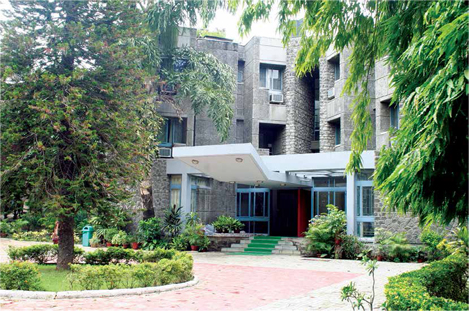
The Institute has completed research projects for various institutions and government agencies including Reserve Bank of India; Ministry of Rural Development, Government of India; Ministry of Commerce and Industry, NABARD; International Finance Corporation, Washington; Asian Development Bank, Manila; Financial Services Volunteer Corps; UNICEF, and International Fund for Agriculture and Development.
NIBM has conducted research in areas as diverse as competency assessment validation of ICAAP, Credit Guarantee Scheme for education loan, Customer Satisfaction Survey, Alternate Channels and Payment Products, Organisational Restructuring, and Training Need Analysis. Research projects are also carried out on topics as Impact of Implementation of Ind-AS on Credit Ratings of Borrowers; Branch Risk Profile; Formats for Conduct of Risk Assessment under RBIA; Operational Risk Capital Estimation under BIA and TSA; Credit Management; Customer Segmentation Analysis; and Financial Awareness among Gen-Next. Recently, we have completed research projects on Improving Efficiency of Retail Payment Systems in India, Competency Mapping for some public sector banks. NIBM has written a manual on Treasury Management for a public sector bank. Recently, NIBM was a part of an exercise with the Comptroller and Auditor General of India (CAG) in the context of recapitalisation of banks.
NIBM is involved in conducting need-based, customised tailor-made bank-specific training and consultancy projects for individual banks.
During the last 2016-17, NIBM faculty was able to publish 13 research papers in ABDC accredited journals under B & C category and 7 articles in other journals.
‘A banker has to be very selective in sanctioning a lending proposal. Lending to the commercially viable proposals and timely recovery of the amount lend are very important for a banker’
NIBM’s academic organisation consists of faculty from a wide range of disciplines, viz. Economics, Finance, Commerce, Business Management, Computer Science, Agricultural Science, Psychology, Sociology, etc. Practising bankers including central bankers strengthen the faculty by serving the Institute for varying period of time.
Presently, we have 28 regular faculty members. In addition, six former bankers who were in senior positions of Deputy Managing Director, Executive Director/Chief General Manager/General Managers in various banks, are now NIBM guest faculty. NIBM also invites banking practitioners to give the operational perspective.
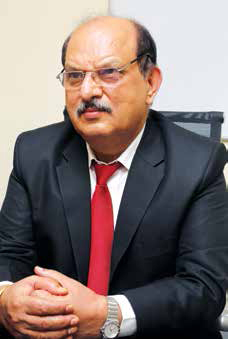
NIBM conducts AICTE-approved two-year Post Graduate Diploma in Management (PGDM) – Banking and Financial Services with a focus on Banking and Finance as an integrated and mutually inclusive areas of specialisation. Since its inception (2003-04), its students have had 100 percent placements in various public as well as private sector banks and financial institutions. Presently, we are having two PGDM batches running concurrently.
Recently, NIBM has launched its e-certification courses in the areas of Credit Management, Risk Management, Treasury Management and Accounts and Audit Management as per the mandate of Reserve Bank of India.
A banker has to be very selective in sanctioning a lending proposal. Lending to the commercially viable proposals and timely recovery of the amount disbursed are very important for a banker.
Public money is invested with a lot of trust in the form of deposits, current and savings accounts and the bank has to act as custodian of these deposits.
The customer is the most important person for the bank. If you take care of the customer, you are doing a great job.
Banking, as a career, like many other professions, is very competitive but rewarding, especially with lot of other foreign banks opening shops in India. Banking career is also very exciting with technology being the game changer, with the paradigm shift and a move towards cashless and digitalisation which has its own challenges.
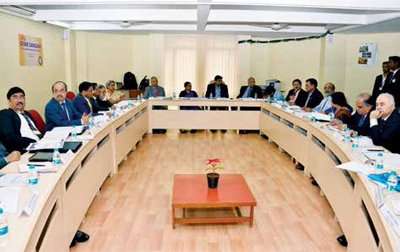
As far as the ITI experience is concerned, it was into financial losses since 2002-03 and under financial stress. It was declared as a sick company and referred to BIFR in 2004. From 2003-2010, ITI was trying to get the revival proposal sanctioned. I take credit that I was in a position to take the long-outstanding revival package of ITI to a logical conclusion. The original revival proposal was for around Rs.1,850 crore and I got Rs.4,156 crore sanctioned from the Government. I also got it approved from the BIFR and Board for Reconstruction of Public Sector Enterprises (BRPSE). It is a body set up under the government machinery to look after the revival of loss-making or stressed central PSUs, and finally it was approved by the Government of India in 2014.
HUDCO was set up in 1970. The profitability during my time in 2009-10 was highest since its inception—Rs.495 crore. I brought down net NPAs to 0.5%. I was also instrumental in getting the rating upgrades from two rating agencies-Fitch and CARE. There were more than 250 downgrades for debt instruments of the corporates including banks and financial institutions in the country during 2008-09 which was post-Lehman period. At that time, even retaining the ratings was difficult. I got the rating of debt instrument of HUDCO upgraded despite this dismal scenario.
The National Culture Fund, Government of India, was set up by the Government of India. As you are aware, India’s cultural heritage is very rich. The government wanted extra-budgetary resources for preservation and protection of the cultural heritage, hence it created this fund. The basic objective was to mobilise the resources from corporates and individuals for the preservation and protection of the cultural heritage. Every PSU or private sector entity now has to contribute 2% of its net profit towards Corporate Social Responsibility (CSR) having net-worth or profit or the turnover over a threshold limit, as per the Company Act, 2013. Protection of cultural heritage of the country is covered under the definition of CSR. I was in a position to mobilise public sector and private sector funding or get their financial commitments which were quite substantial for the objective of National Culture Fund. We were doing most of the projects for the monuments of the Archaeological Survey of India (ASI), which is under the same Ministry.

Every state wants to increase the share of manufacturing in the state GDP. So, we were basically having investor meets in various parts of the country and overseas. The Haryana State Industrial & Infrastructure Development Corporation (HSIIDC) is one of the flagship organisations of Haryana for the industrial growth of the state. HSIIDC’s first Industrial Model Township (IMT) in Manesar was conceived during that period and about 1,780 acres of land was acquired for this project in one go. I was the executive director then. The delegation headed by the chief minister used to visit different countries and have meetings with the potential investors. The endeavour was to give them an overview of the state of Haryana and request them to invest in it. The state government assures them that they would be given the clearance under one roof. At that point of time when I was part of it from 1992- 2000, Haryana was No. 1 preferred state at that point of time as per CII. That was the time when we attracted lot of Japanese and Korean investors to the state and also acquired the largest chunk of land in one go in Manesar, for the first IMT where earlier Japanese were thinking of having an industrial park.
We are a family of bankers. My wife has been a banker and so is my son who did his MBA in 2006 from IIMA and now he is the Asia Head of Forex Derivatives of one of the largest American banks.
Pune is a beautiful place. I thought Chandigarh was the most beautiful place to live in India. Now I feel that Pune has an edge over Chandigarh because of the weather. Pune is truly the Oxford of the East, with mushrooming of quality educational institutions. With growing IT hub, it has all the potentials of a metropolitan city. Traffic jams though, is an issue.
I have always believed in hard work. And it’s probably because of that I was in a position to achieve certain milestones. In my opinion, there is no substitute to hard work.
By Vinita Deshmukh